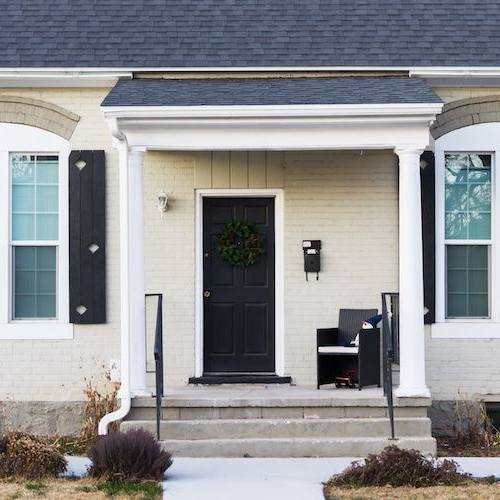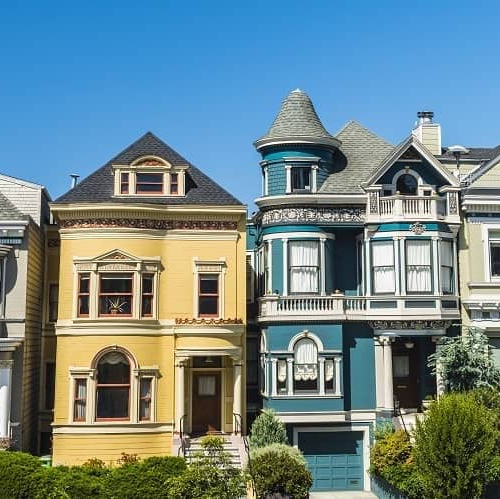A complete guide to a $100,000 mortgage
Contributed by Tom McLean
Aug 8, 2025
•8-minute read

When buying a home, the amount you’ll pay per month varies dramatically based on the loan amount, loan term, and interest rate. As you start your home search, it’s helpful to have a general idea of a monthly mortgage payment. Understanding how much a $100,000 mortgage payment will cost you can be a good starting point.
On a $100,000 mortgage, you could pay anywhere from $648 to $830, depending on your interest rate and loan term. For instance, with an interest rate of 6.75% , monthly payments on a 30-year fixed-rate $100,000 mortgage would be $648.60 per month.
Monthly payments on a $100K mortgage
Mortgage payments can include more than just principal and interest. Here are the main costs that make up the payment for a $100,000 mortgage.
- Principal: This is the amount you borrow.
- Interest: This is the cost you pay the lender to borrow the principal, expressed as a percentage. The lower your rate, the less interest you pay.
- Taxes: Property taxes vary widely and are levied by state and local governments to fund services and schools. It’s common for homeowners to pay their tax bill through an escrow account. Mortgage lenders estimate the annual tax bill and collect a monthly fee in addition to your loan costs. The fee is held in an escrow account and paid on your behalf on time and in full.
- Insurance: Homeowners insurance reimburses for the cost of repairs if your home is damaged. The cost averages from about $130 to over $200 per month, and is usually paid, like property taxes, with money collected in an escrow account. The combination of principal, interest, taxes, and insurance is known as PITI.
- Private mortgage insurance: PMI reimburses the lender for its losses if you default on your mortgage. You only pay PMI if you have a conventional loan and your down payment was less than 20% of the home’s purchase price. PMI typically runs about .55% to 1.85% of your loan amount per year. On a $100,000 mortgage, that would be between about $46 and $154 per month. Your lender will stop charging you for PMI when you reach 22% equity in your home.
What other factors affect a monthly mortgage payment?
Here are some other factors that affect your monthly payment for a $100,000 mortgage.
- Loan term: The length of your mortgage term affects the monthly payment in dramatic ways. On a $100,000 mortgage at 6.75%, you’d pay $885 monthly with a 15-year term and $649 a month with a 30-year term.
- Down payment: If you put down less than 20% of the purchase price and take out a conventional mortgage loan, you’ll have to pay for PMI. Borrowers who make a larger down payment are more likely to get a lower interest rate and better terms on their mortgage. And, of course, with a larger down payment, you reduce the amount of money you need to borrow.
- Closing costs: These are fees you pay up front for processing your loan. Closing costs usually cost from 2% to 5% of the loan amount. They can be paid out-of-pocket, or you may be able to add them to your mortgage balance, which would increase your monthly payment and cost you more in interest.
- Location: Location affects how much you pay in property taxes and for homeowners insurance. For instance, Hawaii has an average annual property tax rate of 0.26%, while New Jersey’s is 2.08%.
- Credit score: Generally, your credit score and your interest rate are inversely related: the higher your credit score, the better chance you have of qualifying for a lower rate. Build up your score to 780 or above, and you’re in the running for the best rates.
What to expect: Monthly payment estimations
Here’s a look at what the monthly payment on a $100,000 mortgage might look like with varying interest rates and terms. These numbers include principal and interest only.
| Interest Rate | Monthly Payment (15-Year Loan) | Monthly Payment (30-Year Loan) |
|---|---|---|
| 6.25% | $857.42 | $615.72 |
| 6.50% | $871.11 | $632.07 |
| 6.75% | $884.91 | $648.60 |
| 7.00% | $898.83 | $665.30 |
| 7.25% | $912.86 | $682.18 |
Eligibility requirements for a $100K mortgage
Here are some common financial benchmarks lenders typically require in mortgage applicants.
- Credit score: Most lenders look for a credit score of 620 or above. However, some government loans, such as Federal Housing Administration loans, allow scores as low as 580, and sometimes 500, with a larger down payment.
- Income: Lenders want to see a steady income stream to know that you can afford the monthly payments.
- Debt-to-income ratio: Your DTI ratio shows what percentage of your gross monthly income goes to debt payments, such as your mortgage, student loans, credit cards, or car loans. Lenders prefer borrowers with a DTI ratio no higher than 43%.
- Employment history: Whether you’re self-employed or an employee, lenders like to see 2 years of steady employment.
How much total interest will you pay on a $100,000 mortgage?
The length of your mortgage affects your monthly payment and the lifetime cost of your loan. A longer term means a lower monthly payment, but you’ll pay more interest overall.
Let’s illustrate this with our example of two $100,000 loans, one with a 30-year fixed-interest term and the other with a 15-year fixed-interest term, both at 6.75%.
The 30-year will result in a lifetime interest cost of $133,495, meaning that you’ll pay $233,495 in principal and interest. Contrast that with the 15-year version, in which you’ll pay a total of $59,284 in interest, in addition to the $100,000 in principal.
If you can handle the higher monthly payments – $884.91 vs. $648.60 – paying your loan off in 15 years saves you $74,211.
Amortization schedule for a $100K mortgage
An amortization schedule shows you how much of each mortgage payment goes toward principal and interest. In the early years of paying your mortgage, interest makes up most of your payments. By the end of the loan, you’re mainly paying principal and some interest. You can use our free amortization calculator to see how this works.
Here’s an annual amortization schedule for a 30-year fixed-rate $100,000 mortgage with a 6.5% interest rate.| Year | Starting balance | Estimated monthly payment | Total interest paid in one year | Total principal paid in one year | Remaining balance | |
|---|---|---|---|---|---|---|
| 1 | $100,000 | $632.07 | $6,467.09 | $1,117.73 | $98,882.27 | |
| 2 | $98,882.27 | $632.07 | $6,392.23 | $1,192.58 | $97,689.69 | |
| 3 | $97,689.69 | $632.07 | $6,312.37 | $1,272.45 | $96,417.24 | |
| 4 | $96,417.24 | $632.07 | $6,227.15 | $1,357.67 | $95,059.57 | |
| 5 | $95,059.57 | $632.07 | $6,136.22 | $1,448.60 | $93,610.98 | |
| 6 | $93,610.98 | $632.07 | $6,039.21 | $1,545.61 | $92,065.37 | |
| 7 | $92,065.37 | $632.07 | $5,935.69 | $1,649.12 | $90,416.24 | |
| 8 | $90,416.24 | $632.07 | $5,825.25 | $1,759.57 | $88,656.68 | |
| 9 | $88,656.68 | $632.07 | $5,707.41 | $1,877.41 | $86,779.27 | |
| 10 | $86,779.27 | $632.07 | $5,581.67 | $2,003.14 | $84,776.13 | |
| 11 | $84,776.13 | $632.07 | $5,447.52 | $2,137.30 | $82,638.83 | |
| 12 | $82,638.83 | $632.07 | $5,304.38 | $2,280.44 | $80,358.39 | |
| 13 | $80,358.39 | $632.07 | $5,151.66 | $2,433.16 | $77,925.23 | |
| 14 | $77,925.23 | $632.07 | $4,988.70 | $2,596.11 | $75,329.12 | |
| 15 | $75,329.12 | $632.07 | $4,814.84 | $2,769.98 | $72,559.14 | |
| 16 | $72,559.14 | $632.07 | $4,629.33 | $2,955.49 | $69,603.65 | |
| 17 | $69,603.65 | $632.07 | $4,431.39 | $3,153.43 | $66,450.23 | |
| 18 | $66,450.23 | $632.07 | $4,220.20 | $3,364.62 | $63,085.61 | |
| 19 | $63,085.61 | $632.07 | $3,994.87 | $3,589.95 | $59,495.66 | |
| 20 | $59,495.66 | $632.07 | $3,754.44 | $3,830.38 | $55,665.28 | |
| 21 | $55,665.28 | $632.07 | $3,497.91 | $4,086.90 | $51,578.38 | |
| 22 | $51,578.38 | $632.07 | $3,224.21 | $4,360.61 | $47,217.77 | |
| 23 | $47,217.77 | $632.07 | $2,932.17 | $4,652.65 | $42,565.12 | |
| 24 | $42,565.12 | $632.07 | $2,620.57 | $4,964.25 | $37,600.87 | |
| 25 | $37,600.87 | $632.07 | $2,288.11 | $5,296.71 | $32,304.16 | |
| 26 | $32,304.16 | $632.07 | $1,933.38 | $5,651.44 | $26,652.72 | |
| 27 | $26,652.72 | $632.07 | $1,554.89 | $6,029.93 | $20,622.79 | |
| 28 | $20,622.79 | $632.07 | $1,151.05 | $6,433.76 | $14,189.03 | |
| 29 | $14,189.03 | $632.07 | $720.17 | $6,864.65 | $7,324.38 | |
| 30 | $7,324.38 | $632.07 | $260.43 | $7,324.38 | $0.00 |
And here’s an amortization schedule for the same loan with a 15-year term instead of 30.
| Year | Starting balance | Estimated monthly payment | Total interest paid in one year | Total principal paid in one year | Remaining balance | |
|---|---|---|---|---|---|---|
| 1 | $100,000 | $871.11 | $6,380.07 | $4,073.22 | $95,926.78 | |
| 2 | $95,926.78 | $871.11 | $6,107.28 | $4,346.01 | $91,580.78 | |
| 3 | $91,580.78 | $871.11 | $5,816.22 | $4,637.07 | $86,943.71 | |
| 4 | $86,943.71 | $871.11 | $5,505.67 | $4,947.62 | $81,996.09 | |
| 5 | $81,996.09 | $871.11 | $5,174.32 | $5,278.97 | $76,717.12 | |
| 6 | $76,717.12 | $871.11 | $4,820.77 | $5,632.51 | $71,084.61 | |
| 7 | $71,084.61 | $871.11 | $4,443.55 | $6,009.73 | $65,074.87 | |
| 8 | $65,074.87 | $871.11 | $4,041.07 | $6,412.22 | $58,662.65 | |
| 9 | $58,662.65 | $871.11 | $3,611.63 | $6,841.65 | $51,821.00 | |
| 10 | $51,821.00 | $871.11 | $3,153.44 | $7,299.85 | $44,521.15 | |
| 11 | $44,521.15 | $871.11 | $2,664.55 | $7,788.74 | $36,732.41 | |
| 12 | $36,732.41 | $871.11 | $2,142.92 | $8,310.36 | $28,422.05 | |
| 13 | $28,422.05 | $871.11 | $1,586.36 | $8,866.92 | $19,555.12 | |
| 14 | $19,555.12 | $871.11 | $992.53 | $9,460.76 | $10,094.36 | |
| 15 | $10,094.36 | $871.11 | $358.93 | $10,094.36 | $0.00 |
How to get a $100,000 mortgage
Here are the steps you need to take to get a mortgage for $100,000.
Step 1: Apply for preapproval
Mortgage preapproval is a lender’s estimate of how much it expects you can qualify to borrow. To get a preapproval letter, a lender will ask for your financial information and estimate how much of a mortgage it expects you can get. This lets you know how much house you can afford, and it shows agents and sellers you are a serious and qualified buyer.
Step 2: Make an offer on a home you love
Once you find a home you want to buy, it’s time for your real estate agent to make an offer. They will submit an amount you’re willing to pay, show the seller your preapproval letter, and give them the terms you are offering, such as the length of the escrow.
Step 3: Secure the details
If the seller accepts your offer, it’s time to officially apply for a mortgage. This is the point when your lender’s underwriter will want a closer look at your finances and the property you’re buying. The lender will probably want a lot of documentation, such as tax and employment records, a home inspection, and an appraisal. If everything checks out, you’ll receive a Closing Disclosure, which details your home loan, including all costs.
Step 4: Close on the home loan
The big day has finally come. But first, you’ll need to officially close on the home. Prepare to sign a lot of documents, have everything rechecked, and pay any outstanding fees.FAQ
Here are answers to some common questions about how to apply for a mortgage for $100,000.
Is it possible to buy a house for $100K?
Absolutely. Sure, with a national median home sale price of $410,800 in the first quarter of 2025, it’s not as easy as it used to be, but there are some states where $100,000 still goes a long way in the housing market. If you’re a remote worker or retiree and can live anywhere in the country, consider more affordable states such as West Virginia, Kansas, or Oklahoma, where median values are well below the national average. And keep an eye on what the market may do next to stay up to date.
How much is the down payment for a $100K mortgage?
The down payment for a $100,000 mortgage can be as low as zero for certain loans, or as high as 20%, which would be $20,000.
How much income do I need for a $100K mortgage?
To calculate how much you should spend on a house based on your income, use the 28/36 rule. You’d need a gross monthly income of $2,254, or about $27,048 a year, to afford a $100K mortgage using the 28% rule. If you have other debt payments, your income needs would be higher. For example, with $500 in other monthly debt, you’d need about $3,142 a month (or $37,704 a year).
The bottom line
Qualifying for a $100,000 mortgage is a process, one with clear steps. Many factors affect the monthly payment on a home, such as the interest rate, the loan terms, property taxes, insurance, and more. But expect to pay $648 – $830 per month, not including homeowners insurance, property taxes, or PMI.
The first step is to get mortgage preapproval with Rocket Mortgage®. It’s fast, simple, and brings you even closer to finding your new home.

Terence Loose
Related resources

9-minute read
How to determine your mortgage payment on a $250K loan
Are you thinking of taking out a $250K mortgage? Explore how interest rates, loan terms and other factors can influence your mortgage payment on a $250k loan.
Read more
6-minute read
How to use a mortgage calculator
Learn how to use our mortgage calculator to determine your monthly mortgage payments, including PMI, taxes, insurance, down payment, interest rate and more.<...
Read more

7-minute read
Real estate investing: How many mortgages can you have?
Interested in multiple mortgages? Discover how many mortgages Fannie Mae allows, the borrowing requirements and alternative lending options to consider.
Read more